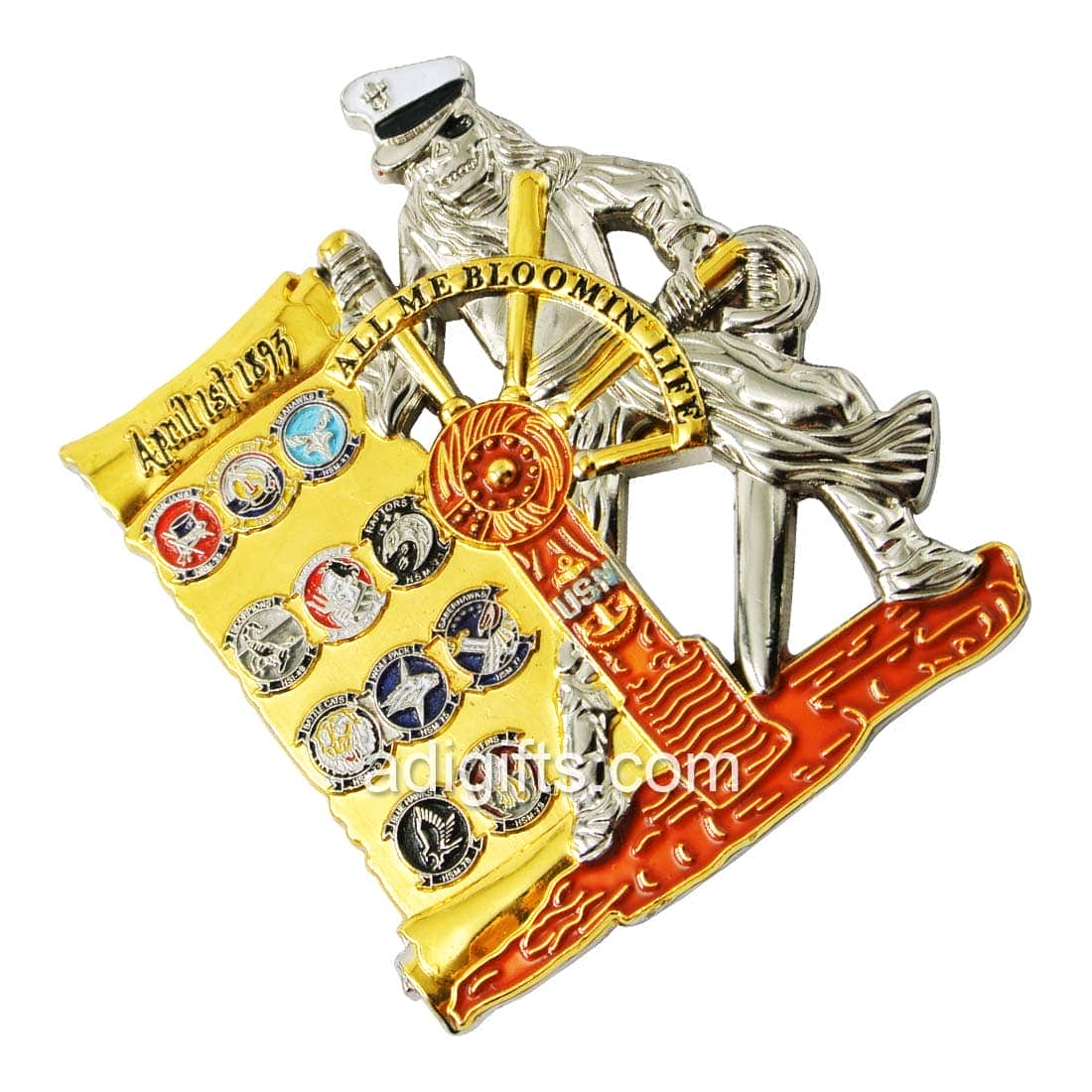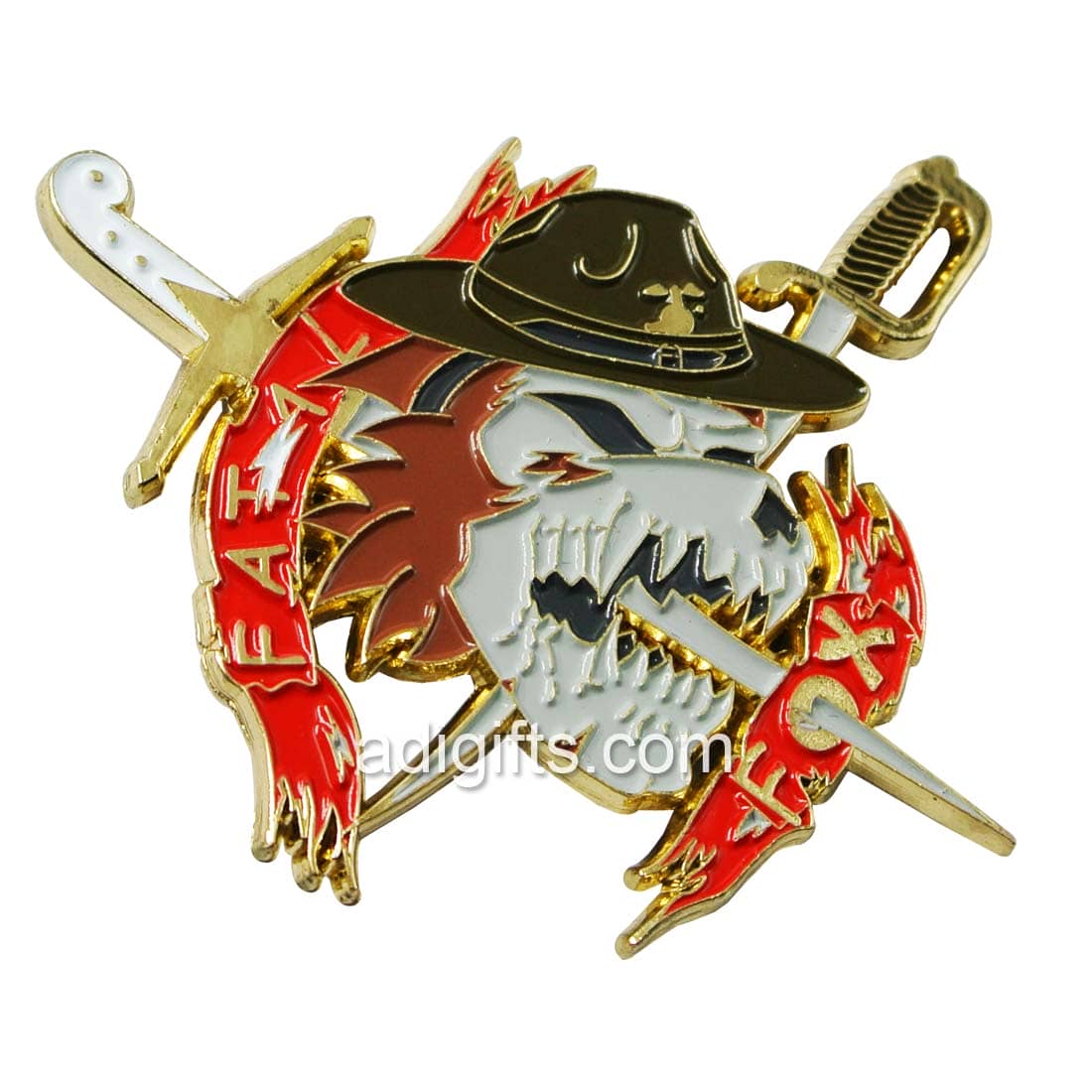
Do you know exactly what the coin is, but what do you know about the coin? If you have worked in the army or for the Department of Defense, you will understand what is challenging coins. They have been American military traditions for centuries, aiming to instill units proudly, improve spiritual power, reward hard work and excellence.

Coins represent anything from small units to high-level leadership offices, such as defense ministers. As well as coins for special events, anniversaries and even non-military leaders.
Many service members and veterans will be proud to showcase coins at their desks or homes, showing many of the tasks they are involved in, the top leaders they meet, and the units they work for.
But do you want to know how this tradition started?
I was curious, so I checked the National Defense University, the Pentagon librarian and historian, as well as the US Army Army History Center and the Navy Historical Heritage Command. These institutions can not find any written records, probably because the challenge of coin traditions did not begin as an officially recognized activity. So I went to the world of modern oral history - also known as the Internet - see what I can find.
The most common mythology
The most famous story of the Internet will challenge the coin tradition back to the First World War. As the United States began to build the Army Air Force, many people volunteered. One of the men was a rich lieutenant, and he wanted to give each member of his unit a souvenir, so he ordered a few coins of bronze.
The lieutenant put his own medal in a small bag he wore on his neck. Soon after, his plane was shot down in Germany. He survived but was captured by the German patrol, and all his identifiable items were taken away, so he could not identify himself to escape. They did not take a small bag with a medal.

The lieutenant was brought to a small town near the front of the war. Despite his lack of identity cards, he managed to find some civilian clothing and escaped and eventually tripped over the French outpost. For those who do not accept uniforms, the French soldier does not recognize his accent, and immediately that he is the enemy.
They initially planned to perform him because they could not recognize him. But the lieutenant, remember his neck there is a small bag, come up with coins to the soldiers badge. One of the French people recognized the badge, so he survived.
The lieutenant was not executed, but was given a bottle of wine, probably a form of compensation for his initial treatment. When he finally returned to his squadron, it became a service for all service personnel to carry the coin at any time, just in case.
Not everyone believes this description
Although the story sounded cool, Barry Spink of the Air Force Historical Research Agency's archives did not buy it.
He said he had been told in the 1990s that the tradition began in Vietnam when an army infantry runway tried to force "outsiders" to buy drinks for the entire bar while trying to keep non-infantry if they could not prove that they had been In the fight "proof" from the enemy bullets began, and then with grenades, rockets and unexploded ordnance a bit out of control. As a result, items with coin size in units of badges are recognized as proof forms.
A greater possibility
Spink also sent me an article titled "Print Tradition", which was published in 1994, "Soldier Magazine". It offers a similar version of the Vietnamese story, the story of the First World War and another option that dates back to the early 1960s:
According to a member of the eleventh Special Forces Group, the old coins were removed, they were marked by different signs, and then submitted to the members of the unit, according to the Kennedy Theater Museum curator Rox Merriel (Roxanne Merritt) The commander of the Tenth SFG picked up the idea and became the first coin for the US unit casting unit. Merritt said the tenth group was still the only army with its own coins until the mid-1980s, when the explosion occurred, everyone began casting coins. "
So if you ever thought about what is challenging the coin, challenging the coin on behalf of what or challenging the meaning of the coin behind what you can choose to write this story! Go into the challenge coin and understand the story behind the coin